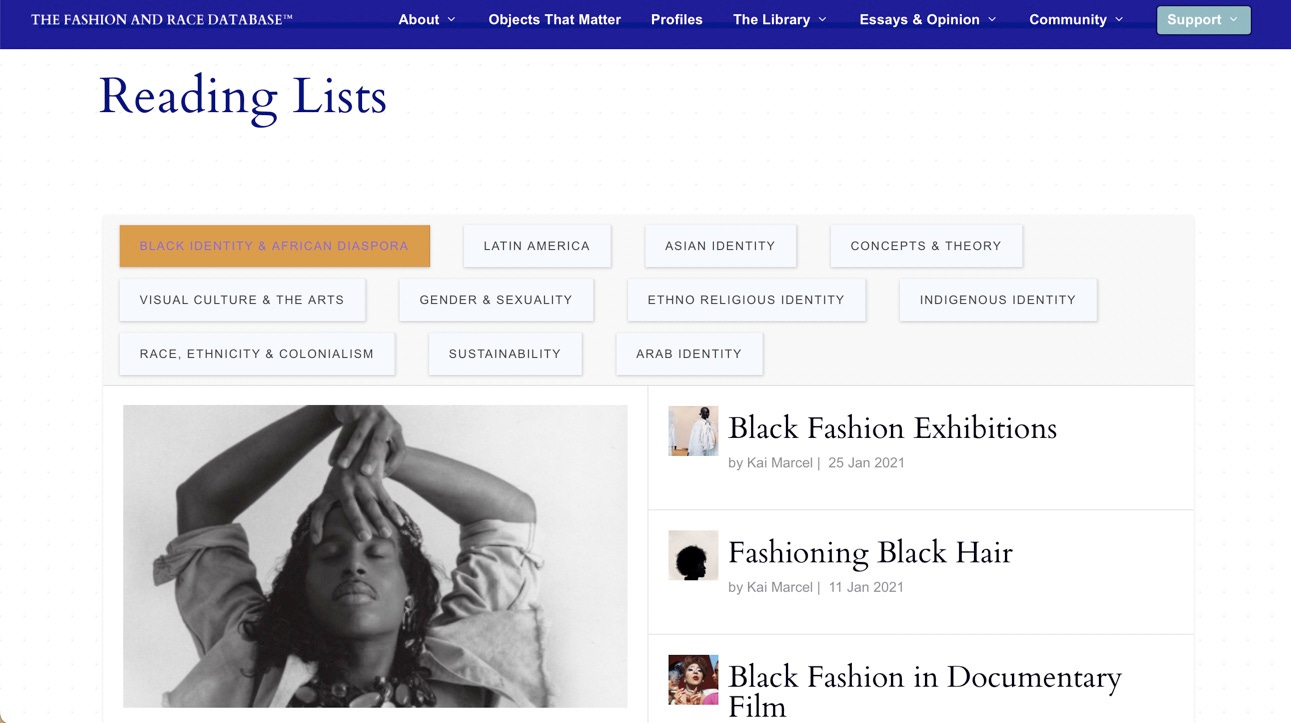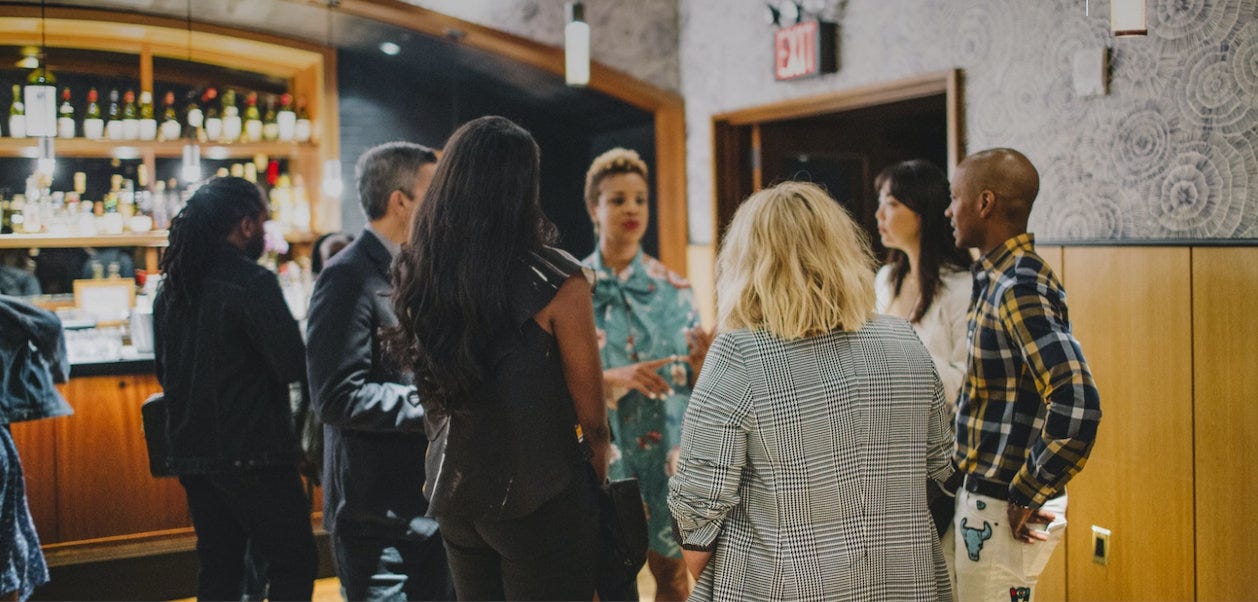A "homegrown publication" for a new era in fashion.
What ELLE says about our newsletter, the newest addition to the database, get to know Harlem's Fashion Row and an intersectional analysis of "fat fashion."
Hello everyone,
This week I’d like to share our latest feature in ELLE, introduce the newest (non-human) addition to our database family, spotlight one of the most powerful platforms for diversity in fashion and an invitation for scholars and writers to contribute research towards an intersectional approach to “fat fashion.”
ELLE features FRD in article on the rise of fashion newsletters
Over a week ago, I sat down with Vēronique Hyland from ELLE to discuss the rise of fashion newsletters in the new COVID era, with newsletters speculated to hold the same allure that fashion blogs had over ten years ago. What is the appeal of newsletters? Clearly you are reading this one, but are there other newsletters that you are subscribing to? I provided my own thoughts and opinions, noting the sense of grounded-ness and purpose that I feel when I sit down and write this newsletter every week. I wasn’t alone in this sentiment, and I invite you to read the piece (pictured below), which includes interviews with other newsletter writers in fashion who are enjoying small, but intentional followings.

New Section Announcement: ‘Reading Lists’
Early this year the FRD team was talking about all of the library ‘roundups’ that we have put together for our readers (which you typically see here each week) and creative ways to organize them. The library roundup began last summer when I was concerned that readers may feel overwhelmed by all of the sources that we amassed, or that they may need a little bit of direction.
Indeed, we have countless sources now (over 300 books!) and I knew that many of the sources had commonalities. The library roundup was thus conceptualized not too long after the July relaunch as a sort of teaching tool that isn’t unlike a guide that you may find in a subject-specific, physical library.
The library roundup has always consisted of just 5 sources to get someone started in their exploration or research journey of a certain topic. So far, we’ve covered topics such as colorism, cultural appropriation, intersectional sustainability, fashion and colonialism, among many others.
Circling back to this year’s FRD team discussion, we decided to create a new section that’s located under ‘The Library’ tab, called ‘Reading Lists.’ There, you will find all of the library roundups (now called reading lists) that we have created, and the lists are all categorized by topic for ease of navigation and understanding.
As of this month, we have welcomed our very first guest contributed reading list by The Zay Initiative (see last week’s newsletter), and we hope to host more collaborative readings lists in the future. In the meantime, I invite you to check out our new ‘Reading Lists’ section, and let us know what you think!
‘Reading Lists’ at ‘The Library’ is where we collect and organize countless educational sources all in one place. Referenced by educators, students, fashion enthusiasts and curious minds, this multi-faceted repository provides an expanding selection of tools for learning about all matters connected to fashion, appearance, power and the impact of ‘race.’
Do you appreciate our content and research? Learn about our sponsorships or support us with a one-time or monthly, sustaining donation!
Directory Spotlight: Harlem’s Fashion Row
About Harlem’s Fashion Row:
Harlem’s Fashion Row is a social company that provides a voice for multicultural designers, through a creative platform that enables these designers to sell and present their collections to key leaders within the fashion industry. HFR is committed to creating high-quality experiences, through unique, innovative and inspiring displays of fashion. It is a celebration of the fashion community that reflects the culture and personal experience of multicultural designers. It takes a village to raise an artist and HFR is that Village.
Visit Harlem’s Fashion Row from our Directory page.
The discourse on fashion and race threads through a vast network of like-minded endeavors. ‘The Directory’ catalogues other sources of information and inspiration.
Opportunities: Call for Papers, Dossier “Fat Fashion: Cross-Cultural Perspectives” (due April 15)
Excerpt from Dossier Coordinators Aliana Aires(UFPI), Lauren Downing Peters(Columbia College Chicago):
The history, culture and theory of fat have been studied in great depth in the United States, where the interdisciplinary field of fat studies has gained traction over the last decade—influencing work in adjacent fields of study. Within the field of fashion studies, the growing scholarly interest in the fat body has manifested in a small body of interdisciplinary research that examines the history, theory and practice of fat or “plus-size” fashion, which centers by-and-large on the American (and to a lesser extent, British and Canadian) experience. Scholars working within the field of fashion studies and its sister disciplines have examined fat positive fashion magazines and blogs, the early history of the large-size garment industry, the representation of fat bodies in the fashion media and the experience of shopping while fat, among other topics rooted in Western media, archives, brand histories and retail spaces. While this important work fills a gap in the fashion literature, which has long marginalized “Other” bodies, it also perpetuates the incorrect idea that fashion is a distinctly Western construct.
Read on for details, including the kinds of topics imagined for this publication in our ‘Opportunities’ section. Closing of the Call for Papers is April 15, 2021.
A global network of events, conversations and opportunities will continue to evolve the discourse on fashion and race. ‘Opportunities’ remains on the pulse and keeps you looped in.
That’s it for now. Please stay safe and we’ll see you next week.
Yours in service and solidarity,
Kim Jenkins
The Fashion and Race Database Team: Rachel Kinnard, Daniela Hernandez, Kai Marcel, Laura Beltrán-Rubio and Anthony Palliparambil, Jr.





